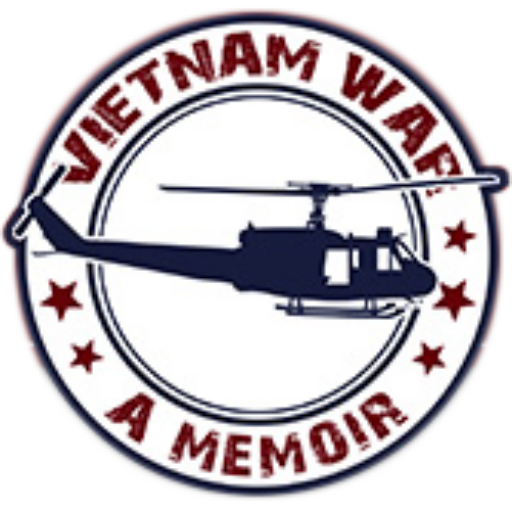Home » History of Vietnam » Early History » Anti-Colonial Struggle
Anti-Colonial Struggle
The anti-Catholic policy gave the French a pretext to intervene in Vietnam. The landing of a French party in the port of Tourane, (present-day Danang) in August 1858, heralded the beginning of the colonial occupation which was to last almost a century. The French Government wanted to establish a strategic and religious sphere of influence in Indochina, but their demands to install a French Consulate and Commercial Attache in Danang were rejected by the Imperial Court in Hue. The French responded by occupying Danang.
The later Emperors, Thieu Tri and Tu Due, became more and more entrenched in their Confucian doctrine and the country experienced an era of stagnancy. The court mandarins were increasingly blinded to the development of the outside world and worse still, implemented a policy of isolation that forbade any contact with foreigners.
Seeing the danger of such a policy, the progressive mandarins in Emperor Tu Due’s court launched a movement to modernize the country. Among these were: Bui Vien, the first Vietnamese envoy to Washington D.C. who presented his credentials to President Ulysses Grant; Nguyen Lo Trach, who wrote a discourse on the changing world; and Nguyen Truong To, a Catholic and strong advocate of progressive change. During the persecution under Thieu Tri, Nguyen Truong To had been taken overseas by French missionaries and educated in France and Malacca. On his return to Vietnam a sympathetic mandarin secured him a minor position in the Royal Court where he spent most of his time writing Emperor Tu Duc a proposal on how to modernize the country. However his proposal was rejected by the dogmatic mandarins after a very heated and lengthy debate in the court.
The failure to implement Nguyen Truong To’s proposals led the Vietnamese leadership progressively deeper into the dogma of Confucianism. Consequently, when the French navy opened fire in DaNang the Court of Hue was totally unequipped to defend the country against the modern and powerful enemy.
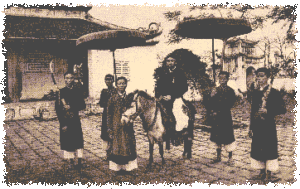
In 1861 the French took Saigon. Six years Later the entire southern part of the country, rechristened Cochinchina, was annexed as a French colony. Vietnam lost its independence in 1883 with the extension of French control to the North. The Center of Vietnam, renamed Annam, and the North, Tonkin, became French protectorates. The three regions were each governed somewhat differently. Cochinchina at first came under a military government, then later a civil governor with a civic council elected by civil servants and naturalized French. The colony sent a representative to the French Parliament. Tonkin was governed in a similar way. In Annam, the Emperor kept his title to power under strong, but more indirect French control.
French efforts to develop the country’s natural resources brought no change to Vietnamese thinking. The Vietnamese were no happier living under French domination than they had been under the Chinese. In 1893, Emperor Ham Nghi and Phan Dinh Phung organized a royalist movement “Can Vuong” and staged an unsuccessful uprising at Ha Tinh. The Can Vuong movement survived until one of its leaders was killed by a Vietnamese traitor. Dogmatic Confucian thought was once again the order of the day. Emperor Duy Tan’s abortive attempt to form a revolutionary movement in 1916 saw to his rapid replacement by Khai Dinh.
By the beginning of the 20th century, various nationalist resistance movements had formed. Among this was one composed almost entirely of aristocrats, intellectuals and young people led by more radical Confucian scholars such as Phan Boi Chau, Phan Chau Trinh and Prince Cuong De – Prince Canh’s great grandson. In an effort to break away from the traditional royalist thinking they embraced the new idea of democracy. The new resistance was greatly influenced by the Japanese victory over Russia in 1904. Convinced that Western power was no longer invincible, Phan Boi Chau and Cuong De sought help in Japan. They established the Eastward Movement in 1907 and Vietnamese students were secretly sent to study at institutions in Japan. When the French authorities discovered this they negotiated with the Japanese government for the extradition of all Vietnamese students from Japan. Some Japanese officials, however, helped Vietnamese revolutionaries and students escape to China.
When the exiled Vietnamese in China witnessed the 1911 Kuomingtang Revolution led by Sun Yat Sen, some young revolutionaries were convinced that the same revolution could take place in Vietnam. They formed the Vietnam Quoc Dan Dang Party, which later became the leading revolutionary party in the struggle against the French.
Meanwhile, a new debate caused a rift between the Westernized reformist Phan Chu Trinh and the nationalist Phan Boi Chau. Phan Chu Trinh opposed Phan Boi Chau’s appeal for foreign help to resolve the French occupation. He believed Vietnam could regain independence through the democratic process as purported by the French constitution. In 1915 Phan Chu Trinh went to Paris to rally Vietnamese exiles and radical French politicians to support the Vietnamese struggle.
Nationalist sentiments intensified in Vietnam, especially after World War I, but all the uprisings and tentative efforts failed to obtain any concessions from the French overseers. The Russian Revolution which occurred at this time had a tremendous impact on shaping 20th century Vietnamese history.
Nguyen That Thanh, alias Nguyen Ai Quoc, better known under his later alias of Ho Chi Minh, a young Vietnamese revolutionary working with Phan Chu Trinh on an anticolonial petition put forward at the Versailles Conference in 1919 by a group of Vietnamese patriots, was greatly impressed with the Russian Revolution. He became involved with French intellectuals who formed the French Communist Party in 1921.
In 1922 Nguyen Tat Thanh went to Moscow to be trained as a Komintemshik, an agent of the Communist International. As a young revolutionary he enjoyed the special privileges afforded him by his Soviet mentors and wholeheartedly espoused Stalin statesmanship.
In 1924 Nguyen Ai Quoc was sent to China as a delegate in Borodine’s advisory team to the Communist Party of China. During this time, he contacted many young Vietnamese revolutionaries, and founded the Association of Vietnamese Youth, which competed with other radical organizations for the liberation of the country. For training purposes, some Vietnamese communist recruits were sent to Moscow and others became affiliated with the Chinese communist party. This situation was to lead to the internal conflict between the pro-Chinese and pro-Soviet factions within the Communist party of Vietnam many decades later. In the same year, 1924, Emperor Khai Dinh died and his son Bao Dal, then aged 12, mounted the throne. Bao Dai was sent to France for his education and returned to Vietnam in 1932. At this time the Vietnamese were waiting to see the French persuaded to adopt more liberal politics, but it soon became clear that the French had no intention of making any real concessions.
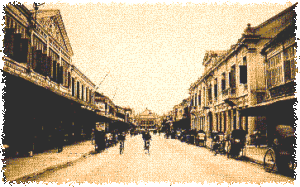
In February 1930, on the Komintern’s instruction, Nguyen Ai Quoc successfully rallied several communist groups and founded the Indochinese Communist Party. Under Ho Chi Minh, for the first time in history, a revolutionary party was systematically formed with the unlimited financial and ideological support of an aspiring superpower. Thus the Vietnamese resistance movement was divided into two major factions, greatly influenced by foreign intervention and foreign agents.
Also in 1930, under the leadership of Nguyen Thai Hoc, the Viet Nam Quoc Dan Dang – a replica of the Chinese Kuomintang, launched a military revolt in Yen Bay. Later, communist groups following the same path of armed revolt, known as the Nghe Tinh Soviets movement, staged a series of peasant uprisings. The French retaliated by taking severe measures against every one of these political movements.
The apparent calm which reigned after the reprisals towards the end of the 1930s shat tered with the first battles of World War II in Europe. In Asia, most of the coastal cities of China fell under the advancing Japanese forces, and likewise in Vietnam where the Japanese rapidly occupied the key regions during 1940.
The Sequels to the Second World War: For Vietnam, the explosion of the World War II in September 1939 was an event as decisive as the French taking of Danang in 1858. When France was invaded the following year, the Vichy Government was formed to govern the country. Vichy accepted the Japanese occupation of Indochina, but as compensation, was allowed to continue administering Vietnam. In March 1945, realizing the allied victory was inevitable, Japan overthrew the French authorities in Indochina, imprisoned their civil servants and rendered Vietnam “independent” under Japanese “protection”, with Bao Dai as Chief of State.The Japanese surrender some months later was an event Nguyen Ai Quoc had been waiting for since the French defeat in 1940.
In May 1941, the Central Committee of the Indochinese Communist Party met in Southern China and announced the formation of the Revolutionary League for the Independence of Vietnam, which later became known as the Viet Minh. A longstanding agent of the Communist International, Nguyen Ai Quoc used the Viet Minh United Front as an instrument to apply his revolutionary strategy, which in fact was a pure transposition of the Dimitrov line to Vietnam’s conditions. In its creation he finally achieved “the union of diverse Vietnamese nationalist groups under communist direction”, a goal that he had been working towards since announcing it as his immediate task to the Komintern Executive Committee in 1924. The nationalists, who later formed the majority in the new Unified Front, had not bargained for their leader’s political orientation. Nor did they realizethe significance of Nguyen Ai Quoc’s words when in 1927 he announced, “I intend to form a national Indochinese revolutionary movement whose leaders will introduce its members to orthodox communism”.
At first the Chinese Nationalist authorities supported the new Vietnamese nationalist Front, but they later got wise to Nguyen Ai Quoc’s new political affiliation. They imprisoned him and created a rival organization. However, they soon realized that Nguyen Ai Quoc’s influence and organization were much needed and released him in 1943. They recognized him as the new chief of the Viet Minh Front and Nguyen Ai Quoc soon adopted the new name of Ho Chi Minh.
During this time, Ho’s principal collaborator, Vo Nguyen Clap, set up some guerilla units in several regions of North Vietnam and created an intelligence network. Communist cells were organized throughout the country under the supervision of Truong Chinh, the young secretary general of the Indochinese Communist Party. These later became of inestimable value to Ho after Japan’s sudden surrender on August 13, 1945.
Ho was waiting for the Thoi Co – the opportune moment when all the conditions were met at the end of the war – to launch the general insurrection. Ho’s resolute certainty of victory is reflected in the “prophetic” conclusion of one of his poems: “In 1 945, the work will be accomplished.”
By the end of World War II, Vietnam had become a political void. Bao Dal’s Japanese installed Government existed in name only.
Apart from a handful of top French civil servants and troops whom the Japanese had imprisoned prior to their removal, Bao Dai had no allied troops in Indochina. In accordance with an allied agreement, Chinese Nationalist forces entered Vietnam as far as the 16th parallel in order to accept the Japanese surrender. The British assumed control of the South the same month. By the middle of August, chaos and uncertainty reigned once again in Vietnam. Ho Chi Minh wasted no time. Using the clandestine Indochinese Communist Party and the Vietminh Unified Front as intermediates, he worked towards becoming a dominant political force, occupying as much territory as possible before the allies arrived.
The August Revolution began on the August 16, 1945, when the Viet Minh announced the formation of a “National Committee of Liberation for Vietnam”. Three days later, Ho’s guerilla forces took Hanoi. Hue’s turn came four days later on August 23, when Bao Dal’s government was besieged and “asked” to hand over the royal seal. Bao Dai abdicated, believing, like most Vietnamese, that the Viet Minh was a true national front supported by the allies. Ho’s forces controlled Saigon and practically all the surrounding rural areas. On August 29, Ho announced the formation of a provisional government in Hanoi. On September 2, 1945, Ho Chi Minh proclaimed himself president of the Democratic Republic of Vietnam. However, Ho Chi Minh found himself in a strategically vulnerable position when the allied forces arrived. He camouflaged the existence of the communist elements within the Unified Viet Minh Nationalist Front and sought support from both the Chinese and the French. In an unprecedented move, the Indochinese Communist Party announced its self-dissolution in November, although in reality it continued to function under the guise of a study group.
Ho Chi Minh then prepared to negotiate Vietnam’s future status with France. In the general elections, organized in January 1946, the Viet Minh won the majority of seats in the first National Assembly. Out of a total of 350 seats, 70 were conceded to the opposition parties by prior arrangement. Ho’s government was officially approved at the Assembly’s first session in March 1946, but at the second reunion in October, only 291 members, including 37 from the opposition, turned up. When asked to explain the poor turnout, one Viet Minh minister announced that the absentees had been arrested for criminal offences! The country’s first national constitution was approved by 240 votes to one.
At the beginning of 1946, Ho began negotiating the basis for future relations with France. The French finally recognized the Democratic Republic of Vietnam as a free state within the French Union. A referendum was to be organized to determine whether the country would be united. However, the relations between the two republics rapidly deteriorated. Hostilities mounted and finally reached a peak with the French bombing of Haiphong port. On December 19, 1946, Ho Chi Minh ordered a general offensive against the French in Hanoi plus the French garrisons in the North and Center. The decade long war for independence had begun.
The Enduring War Of Resistance
The war for national independence which began with the Japanese occupation constitutes the most confused period of contemporary Vietnamese history. Thousands of Vietnamese took up arms against the French, yet few knew the identity and allegiance of their new leader and his party. The population did not entirely understand the historical events occurring in their country, nor could they imagine the consequences that were to follow. To them, at face value, Ho Chi Minh’s new party appeared to consist of nationalists fighting for the common cause of national independence against the known enemy.
On Ho’s orders, Vo Nguyen Clap launched a general offensive against the French forces, but in the face of superior fire power Ho’s troops were forced to retreat to the countryside and high plateau areas. They soon adopted the concept of “people’s war and people’s army”, the Mao Zedong-inspired guerrilla strategy and tactics, which generally consisted of attacking and sabotaging isolated French units, rather than becoming embroiled in any large-scale battles. During this time the French tried to rally support from the non-communist elements, however, they failed to persuade the sceptical nationalists.
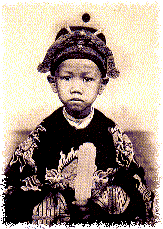
In 1949, France consented to an autonomous Vietnamese government within the French Union. The emergence of Communist China towards the end of 1949 favored the communist-dominated struggle. After Ho’s guerillas had wiped out several French posts on the Chinese border, the two regimes established direct contact for the first time. Peking supplied the young republic with military equipment, substantial provisions and further aid to develop the Vietminh army. On his side, Ho Chi Minh attempted to increase his government’s base of nationalist support. In the beginning of 1951 it was announced that the Unified Viet Minh Front would gradually merge with the new league for the National Union of Vietnam (Lien Viet), which was supposedly a nationalist multi-party alliance. Ho Chi Minh also announced the formation of the Vietnamese Workers Party (Lao Dong), a disguise for the Communist Party, which although officially dissolved had in fact remained active. The communist nature of the Republic’s leaders became increasingly evident as the regime’s leading members became the leaders of the Workers’ Party and in turn occupied the key positions in the Patriotic Front (Lien Viet). The nationalists and non-communists had little choice: either they swore their allegiance to the regime or followed the French.
Vo Nguyen Clap’s guerilla forces progressively extended their territory during 1952 and 1953. By the Spring of 1953, several divisions were training in Laos as “volunteers” and had joined forces with the procommunist Pathet Lao.
1954 began with new communist offensives menacing South Vietnam, central and northern Laos, and the northeast of Cambodia. On May 8, 1954, the French base at Dien Bien Phu suffered a major defeat after a heavy artillery attack from Giap’s forces. The French forces in North Vietnam evacuated to below the 16th parallel. On July 7, 1954, Bao Dai appealed to Ngo Dinh Diem. Bao Dai wished to lead the country with the support of the United States, but a referendum held in October decided to uphold Diem. Bao Dai was deposed on October 26, 1955, marking the end of the Nguyen Dy nasty and the beginning of the Republic of South Vietnam.
The North-South Divide
The war for independence officially ended on July 20, 1954, after the long negotiations in Geneva. In finally gaining full national independence, Vietnam lost its unity. The Geneva agreement signed in August 1954, divided the country at the 17th parallel pending general elections previewed for the middle of 1956. The North became the Democratic Republic of Vietnam under the leadership of the Lao Dong party and the South became the Republic of South Vietnam. In April 1956 the last French troops left Vietnam.
The elections for the reunification of Vietnam stipulated by the Geneva Agreement never eventuated. The Republic of Vietnam, which never recognized the document anyway, naturally was not obliged to fulfil its conditions and Ngo Dinh Diem refused to organize the elections cited in the agreement. The conditions predominating in North Vietnam at the time also rendered the general elections impossible.
From 1954 to 1974 the two Vietnams had no diplomatic, cultural, or commercial relations with each other. Almost immediately after the Geneva Agreement and certainly from the end of the 1950s, a virtual state of war existed between the two parts of the country. North Vietnam’s intensified armed and revolutionary activities made the prospect of reunification through free elections appear increasingly unlikely. Meanwhile, the United States had reinforced Diem’s troops and in three years had transformed South Vietnam into something of an “American protectorate”. December 1960 saw the creation of the National Liberation Front of South Vietnam (FNL) which began launching revolutionary activities against the unstable regime in the South, under the banner of national liberation. The Southern communist movement, christened the Viet Cong by Diem’s government, grew considerably during 1961 and 1962.
Facing mounting popular pressures, Diem ordered repressive measures against the Buddhist Church. This move provoked a wave of suicides by Buddhist bonzes who set fire to themselves in protest against the regime. On June 11, 1963, the Venerable Thich Quang Due, a 66 year old monk, immolated himself on a street corner in Saigon in protest of Diem’s anti-Buddhist campaign. The flames which consumed him burnt into the conscience of the Vietnamese, American, and international public alike, as his image blazed across the world’s television screens and newspapers. This signalled the beginning of the end for President Ngo Dinh Diem’s regime. Diem and his brother were murdered by Diem’s own officers following a coup d’etat on November 1, 1963.
The following years witnessed a succession of coups d’etat, which destabilized the nationalist regime in South Vietnam. Several generals and civilian politicians took it in turn to preside over the unstable Saigon regime. On April 1, 1967, the constitution of the Second Republic of South Vietnam was proclaimed and on September 13, General Nguyen Van Thieu was elected president. South Vietnam’s principal aim was to gain the free world’s understanding and support for its struggle against North Vietnam and its Southern political arm, the National Liberation Front (NLF).
The beginning of 1965 marked the debut of direct U.S. involvement in Vietnam as President Lyndon B. Johnson decided to send troops to Vietnam and to bomb the North. By the end of 1967 there were more than 500,000 American and 100,000 allied troops in Vietnam. 1968 was a year marked by very violent combat and the impact of the Tet offensive, the surprise attack on Saigon and other urban centers throughout the country carried out by Viet Cong commandos at Vietnamese lunar New Year.
The 1968 presidential election campaign in the U.S. triggered a new awareness of the situation after four years of military involvement in Vietnam. President Lyndon Johnson took a decisive turn towards peace and launched an appeal for negotiations to suspend the American bombing of Vietnam. In 1969, Ho Chi Minh died without seeing his work completed.
Between 1968 and 1973, efforts were made at the Paris Conference to try and bring off a provisional agreement. The 1973 Paris Peace Agreement endeavored to: guarantee an end to the hostilities; re-establish peace in Vietnam; ensure the respect of Vietnam’s national and fundamental rights; and ensure the South Vietnamese the right to govern themselves. But the agreement failed to end the hostilities. The two Vietnamese parties lost no time in violating the agreement and the fighting intensified.
In 1975 the American Congress refused South Vietnam the military aid demanded first by Richard Nixon and later by Gerald Ford. The Lao Dong leadership chose this moment to launch its final offensive against South Vietnam and on April 30, 1975, the communist army entered Saigon. The communist party’s long struggle for power – under the banner of national liberation and reunification – finally ended in their complete victory.
A New Cycle Of Conflict And Upheaval
A bright future seemed to stretch before socialist Vietnam after 1975 with the Vietnamese communist leadership making great plans for the rehabilitation of the country. But a series of strategic blunders made – and later admitted by the Hanoi leaders, shattered all hope for a new era in Vietnam’s history. First, the party leadership, under the pressure of the Northern conservative elements, decided to dissolve the Revolutionary Provisory Government of South Vietnam and the National Liberation Front of South Vietnam. In July 1976, Vietnam was officially reunified, thus breaking the fragile balance between the two parts of the country. Second, a radical program of socialist construction was put forward at the Fourth Party Congress in December 1976. It called for the rapid socialization of the Southern economy, with the forced collectivization of agriculture, small industry and commerce. This rapidly led to an unprecedented economic disaster, provoking new waves of refugees. On the international front, as early as 1977, Vietnam found itself in open conflict with Democratic Kampuchea and on a collision course with China. In June 1978, Vietnam decided tojoin the Comecon and in November, signed a friendship treaty – in fact, a security pact – with the Soviet Union. Once again, Vietnam was entangled in the blee politics of the communist powers and their proxies. The invasion of Cambodia by Vietnamese troops at the end of 1978 and the so called “Chinese lesson” were to augur a new cycle of war, which was to absorb most of Vietnam’s post-war energies; energies which could have been constructively spent in economic development. Vietnam’s all-out alliance with the Soviet Union, who invaded Afghanistan in 1979, did nothing to help boost Vietnam’s position on the intemational scene.
For the whole of the next decade, the presence of Vietnamese troops in Cambodia remained a central issue, around which a coalition of nations – China, Asean and the US – managed to enroll international support to isolate Vietnam. Meanwhile, the Khmer resistance rendered Vietnam’s control over Cambodia a kind of Sysiph’s work. The Coalition Government of Democratic Kampuchea, established in 1982, with Prince Norodom Sihanouk as President and Khmer Rouge participation, received growing support from the international community. They occupied Cambodia’s seat at the United Nations, while Vietnam lost most of its hard-earned international reputation. The Cambodian war was becoming a costly stalemate.
At the Fifth Party Congress in March 1982, the old guard, under the guidance of party secretary general Le Duan, obstinately maintained Vietnam’s actual course, hoping that against all odds it could consolidate its political and military edge in Cambodia, and at the same time stabilize the socio-economic situation in Vietnam. The new economic policies, introduced at the Sixth Pienum in September 1979, managed to bring some respite on the domestic front, without improving the chronic weaknesses of Vietnams economy.
It was only at the Sixth Party Congress, in December 1986, which followed the Soviet example of Glasnost and Perestroika, that the party decided to launch the country on an ambitious program of socio-economic renovation. Under the new leadership of Nguyen Van Linh, the motto of the party was then “to change or to die”. A new contract-system was implemented in 1988 to encourage Vietnamese farmers to cultivate their land, and rice production witnessed an immediate upsurge in 1989. Progress was also recorded in the sector of manufactured goods and commodities exports.
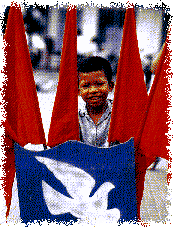
Until the end of 1988, socialist Vietnam followed the path of Soviet perestroika, but the Vietnamese leaders were soon to discover the bold and unchartered nature of Gorbachev’s “new thinking”. The surge of turmoil in China and Eastern Europe in 1989 shocked the Vietnamese communist leaders, who feared the impact of these events upon their regime. While reaffirming the party’s commitment to the reform agenda, Nguyen Van Linh repeatedly rejected any idea of political pluralism and a multi-party system for Vietnam. Meanwhile, the demise of socialism in the Soviet Union and Eastern Europe contributed to the worsening economic crisis in Vietnam, as former members of the now-defunct Soviet bloc, besieged with domestic crises, were no longer in any position to continue their economic assistance to Vietnam. It was in this uncertain context that in mid-1990 Vietnam adopted a new course in foreign affairs. In September, Vietnam’s top leaders secretly visited China in order to mend fences with Beijing. The earlier withdrawal of Vietnamese troops from Cambodia in September 1989, had cleared the way for the political settlement of the Cambodian conflict. The peace process was a difficult one involving the efforts of all the parties directly and indirectly involved: the Soviet Union, China, Asean, the U.S., Japan, France and Australia.
In September 1990, a U.N. plan was finally endorsed by the Perm-Five – the U.S., the Soviet Union, China, the United Kingdom, and France – which called for the setting up of a Supreme National Council, a ceasefire and the cessation of foreign military assistance to the Khmer factions under a U.N.control mechanism, pending the organization of free general elections in Cambodia.
In early 1991, as the Vietnamese people prepared to celebrate the Tet festival, the party leadership laid the groundwork for a new political agenda, which would set Vietnam’s course for the coming decade. A draft strategy for economic development until the year 2000, was submitted at the Seventh party congress, promises to bring Vietnam into the modernity of the 21st century. After a long period of great uncertainty, it seems that the dragon is awakening…
